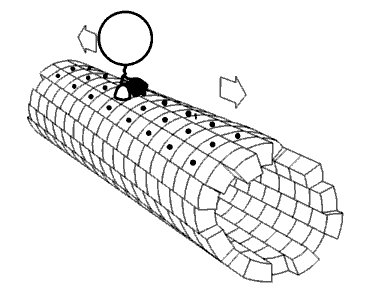
Photo from academic.microsoft.com
The current strategies to eradicate bacteria require that the antimicrobial agent either penetrate or disrupt the bacterial membrane. In Escherichia coli (E.coli) as a model of Gram-negative strains, the antimicrobials… Click to show full abstract
The current strategies to eradicate bacteria require that the antimicrobial agent either penetrate or disrupt the bacterial membrane. In Escherichia coli (E.coli) as a model of Gram-negative strains, the antimicrobials have to cross two barriers - the outer and the inner membrane being the latter composed by ~ 77% phosphatidylethanolamine (PE), ~ 13% phosphatidylglycerol (PG) and ~ 10% cardiolipin (CL) lipids. Each one of these lipid families shares the same headgroup, but contains acyl chains with varying length and degree of unsaturation. Bacteria adapt their membrane lipid composition and metabolism in response to environmental signals, such as the temperature, resulting in different interactions with exogenous molecules, e.g. antibacterial agents. Herein, bacterial model membranes are prepared to evaluate the lipid-lipid interactions in Langmuir monolayers of binary mixtures at several molar ratios of PE and PG or CL at human physiological temperature (37°C). Both PE:PG and PE:CL monolayers were stable at 37°C and presented higher molecular areas (> 20 Å2/molecule) than at 23°C. However, these lipid mixtures presented liquid-expanded state and rigidity (inverse of the compressibility modulus ~ 90 mN/m) slightly lower than at 23°C. Such athermalicity at biologically relevant temperatures may favour the preservation of the biological functions of E.coli.
Journal Title: General physiology and biophysics
Year Published: 2020
Link to full text (if available)
Share on Social Media: Sign Up to like & get
recommendations!